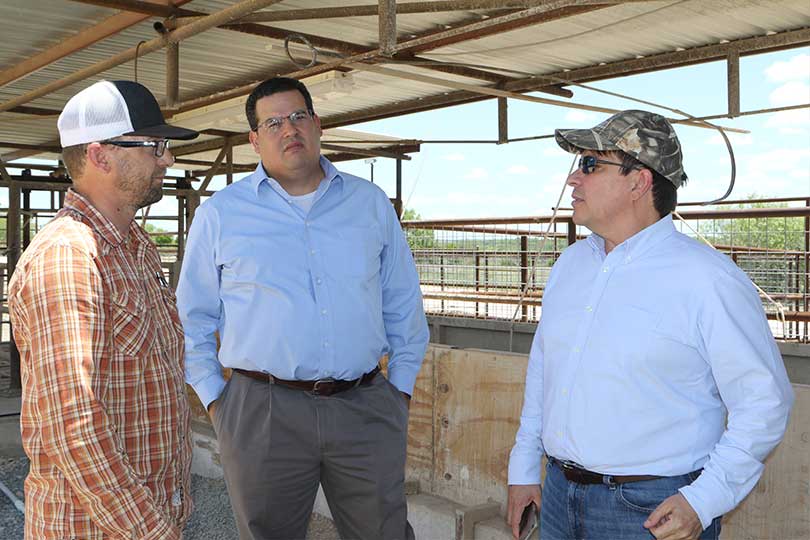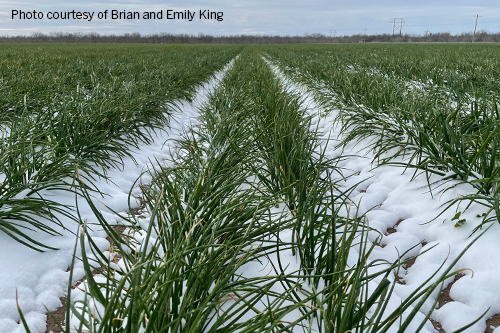By Julie Tomascik
Editor
Ticks without borders are a problem for South Texas ranchers who face a growing number of cattle fever tick infestations.
But those cattlemen have found allies in Washington, D.C.
Congressmen Vicente Gonzalez, Henry Cuellar and Filemon Vela helped secure $91.5 million in the Fiscal Year 2018 Agriculture Appropriations bill for the U.S. Department of Agriculture’s (USDA) Animal and Plant Health Inspection Service (APHIS) Cattle Health Program. That funding is used in part to help fight the spread of cattle fever ticks.
But solutions are still needed, Gonzalez said at a congressional meeting held in mid-July.
“It seems like we’re just putting a Band-Aid on the problem and never getting to the root of it,” he said.
That’s because the tick is crossing the Texas-Mexico border on wildlife and livestock, exposing Texas cattle to the potential for illness and death.
Mexico, which has long been a source of the disease, lacks strict regulations to eradicate the tick.
“As long as the fever ticks were held in check in the permanent quarantine area along the Rio Grande, there was little concern to those not affected,” Harriet Lamm, Live Oak County rancher, said.
But that’s changed, and the outbreak in the Lone Star State is serious. As of July 10, 199 premises are infested and more than 2,500 are under quarantine, according to the Texas Animal Health Commission (TAHC).
Lamm is less than two miles from an infected premises, which means she must check her livestock every 90 days for ticks. To sell livestock, she must first notify the TAHC inspector, who will then set a date to come check the cattle or tell her when to deliver them to the dipping vat for inspection and treatment.
Lamm’s cattle are only being scratched—physically examined to find ticks—because ticks have not been identified on her cattle. That means she isn’t eligible for any cost assistance.
“Additional funding at the state level and through ELAP [Emergency Livestock Assistance Program] would assist ranchers who are having to gather cattle every 14 to 18 days,” she said. “With some minor revisions of the wording in ELAP language, those in check quarantines could receive some benefit from the requirement of having their cattle scratched and dipped.”
Lamm added that funding would also help with the lack of TAHC and USDA APHIS employees available to scratch, dip and help monitor movement in quarantine areas.
A task force was created to evaluate issues like these and provide possible solutions.
The eight members of the task force include: Scott Frazier, TFB state director; Zack Yanta, TFB state director; Rodney Butler, Bee County Farm Bureau (CFB); Brian Glass, Gonzales CFB; Harriet Lamm, Live Oak CFB; Cindy Flores, Kleberg-Kenedy CFB; Freddy Nieto, Willacy CFB; and Fausto Salinas, Hidalgo CFB.
Their work alongside TAHC officials yielded a set of priorities to help improve the situation.
In addition to the ELAP expansion, the task force identified the need for more funding and USDA research prioritization to expedite projects that will aid the eradication effort.
Cooperation from U.S. Fish and Wildlife Service, which manages the Laguna Atascosa National Wildlife Refuge, is also vital. The 98,000-acre refuge holds a large population of white-tailed deer and Nilgai antelope, both of which carry the cattle fever tick to surrounding ranches.
Gonzalez said he’d like the secretary of the Interior to visit and see first-hand what ranchers are dealing with.
“We need to engage the Mexican government and stop this at the border,” Gonzalez said. “We need an educated plan on what it would take to eradicate the tick, and that’s where you all can help.”
Local ranchers also took the congressman and his staff to tour the refurbished dipping vat at the Live Oak Livestock Auction.



A program to fund ranchers to cease from cattle production for 2-3 years and grant ag exemption for the same period would allow fish and wildlife to concentrate on just wildlife tick eradication. Give ranchers a real break.